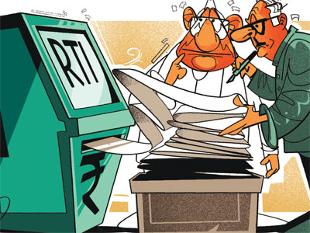Saturday, 23 October 2021 | SASHIPRAVA BINDHANI
A global movement is working towards ending corruption by promoting transparency, accountability and integrity in public offices. The UN’s Sustainable Development Goals (SDGs) 2030 aims to build effective, accountable and inclusive institutions at all levels by wiping out corruption. Much before these initiatives India has drafted and implemented the Right To Information (RTI) Act 2005, also popularly known as the Sunshine Law.
The law which came into force on October 12, 2005 across the country was set to reach its objectives under section 4 of its Act, specifically under section 4(1) b. It is obligatory that within 120 days on its implementation all the public authorities shall suo moto disclose the details under section 4(1) b in 17 points. However, as of today, the people of the country are yet to access information without difficulties as mandated under section 4 of the Act. The subsections ( vi) of section 4 (1) b is the core of the whole Act. The fact is that for the last 16 years the country is witnessing much hue and cry over dissemination of information, role of obligation of public authorities, functioning of different Information Commissions and Commissioners. This sub subsection (vi) is a statement of the categories of documents held by or under its control. This line is the base of the Act upon which the edifice of transparency and accountability stand upon.
A designated officer can only verify the information requested, in the applications of an information seeker, only when the list of the categories of documents available. After proper verification he can provide the documents or deny under section 8 of the Act or take steps under section 11. If the documents available need to be obtained by a certified receipt, then the applicant shall be intimated accordingly. When the information available and some cost is incurred then it can be charged. A soft copy can be provided if references are not there with section 10. The response of non availability of information by the PIO ( Public Information Officer ) can only be verified with subsection (vi) of section 4 (1) b. Further, the retention period of documents available must be mentioned. Further, it is the responsibility of public authority to ensure that the information sought by an information seeker is listed under this subsection, when complaint/ second appeal is abetted and disposed of in a situation of death of the seeker during hearing. Further, the use of section 6 (3) needs to be interpreted with sub subsection (vi) of section 4 (1) b by the list of the categories of documents. Those documents under the control can be obtained by section 2 ( f ). It shall prevent the delay in transferring the application under section 6 (3).
Section 2 (f) says that : “information” means any material in any form, including records, documents, memos, e-mails, opinions, advices, press releases, circulars, orders, logbooks, contracts, reports, papers, samples, models, data material held in any electronic form and information relating to any private body which can be accessed by a public authority under any other law for the time being in force. Further, subsection (vi) needs to be read with subsection (iv) and (v) which most importantly elaborates the accountability and transparency measures of any public authority most specifically the bodies which are responsible for providing justice to people.
It is also very significant to note here that most of the offices and public authorities, even the quasi judicial bodies and Information Commissions, are functioning without the list of such documents. One of the important indicators of corruption-free functioning of public authority is the availability of written norms, guidelines, rules and regulations based on which it is functioning. How can the authenticity and legalities of a public authority be determined without availability of such documents as mentioned under subsection (v) and (vi) of section 4 (1) b of the Act.
There are thousands and thousands of offices in the country where the job description of a particular employee is not available, hence not included in the subsection (vi) so also not in the list of (v). Employees are retiring without benefits during the services and their family members are fighting even after death to receive the legitimate dues. There are lakhs of contractual/short term skilled employees retiring from their jobs without a job description and wages as per law of the country. It would be pertinent to mention that the conditions of service of different commissioners are also not available even after completion of tenure.
We can’t deny that there are many such departments and public authorities across the country which are making efforts to ensure availability of information under section 4 of the Act. It is indubitable and perspicacious that the accountability measures, which are ascertained by the written norms(not arbitrary) set by the law of the country under the constitution, are not available. And after completion of 16 years of enactment of the Sunshine Law, the citizenry is yet to access information and obtain it without using form A under section 6 (1) of RTI Act 2005. Hence, the Government in the States and Centre should take appropriate steps immediately to prevent such a situation against transparency, that is for a corruption free system in the country.
(The writer is a former State Information Commissioner, email: [email protected])

Leave a Reply